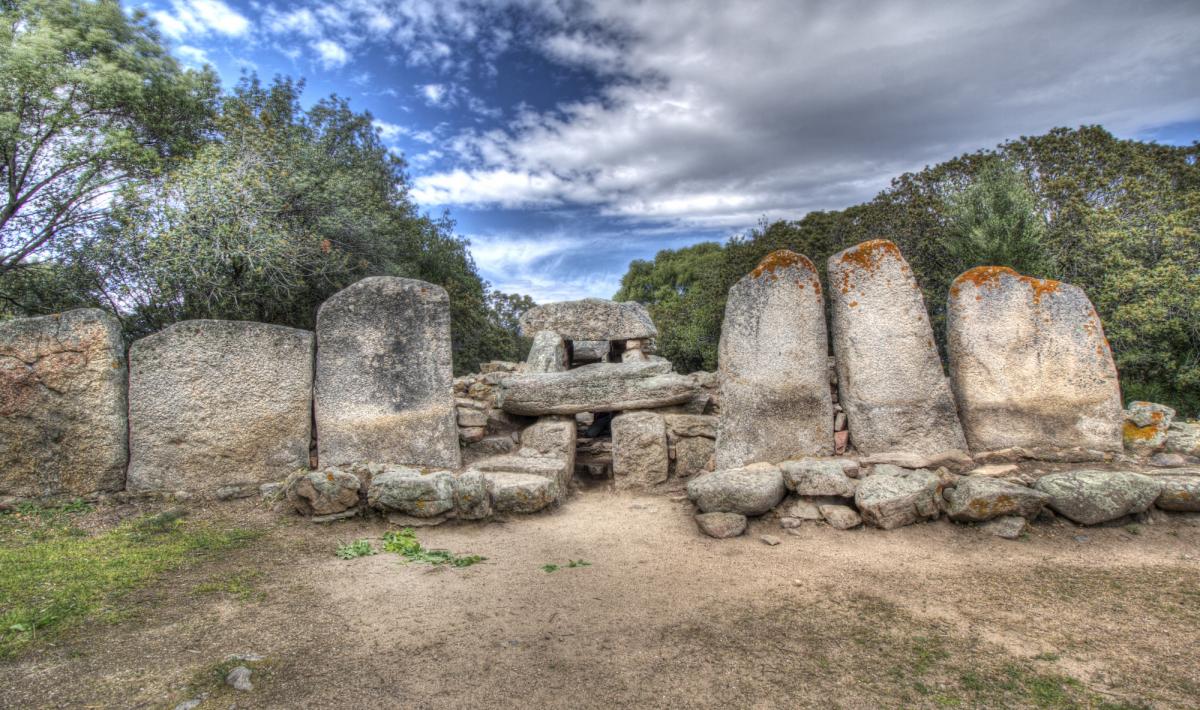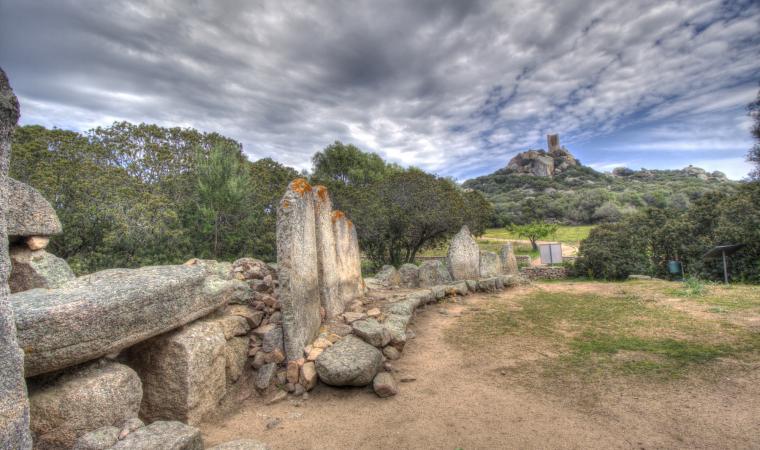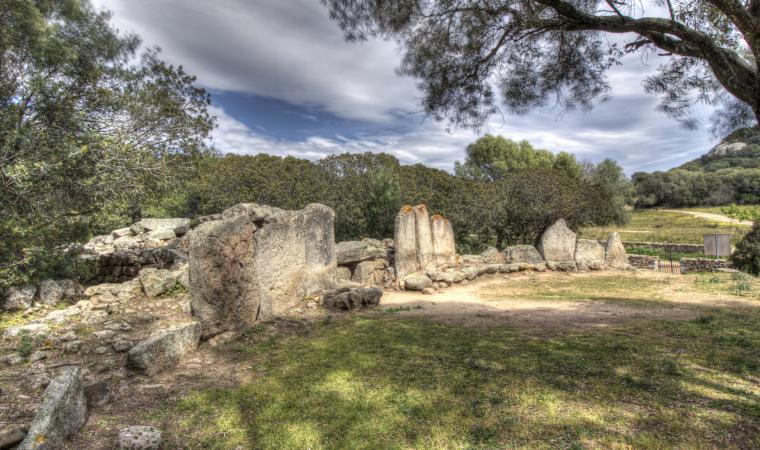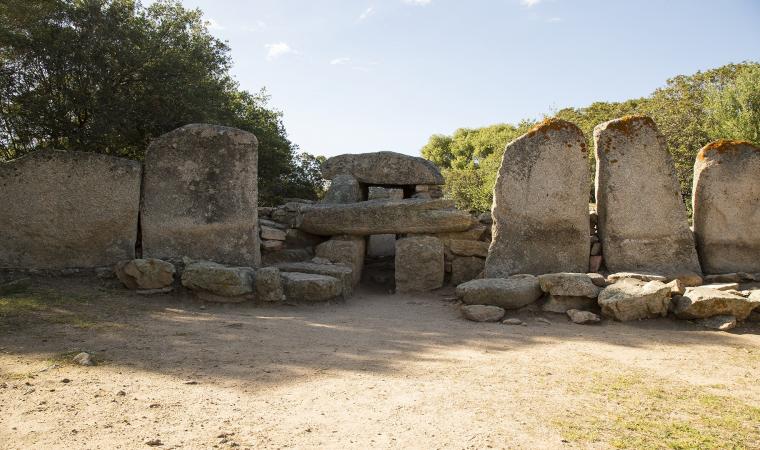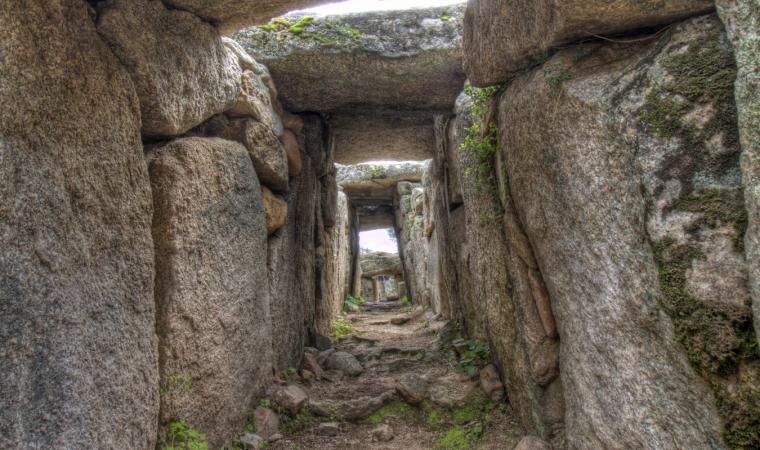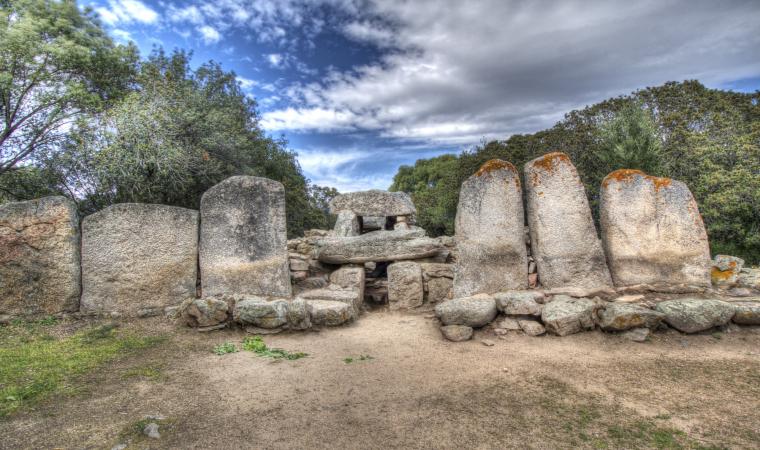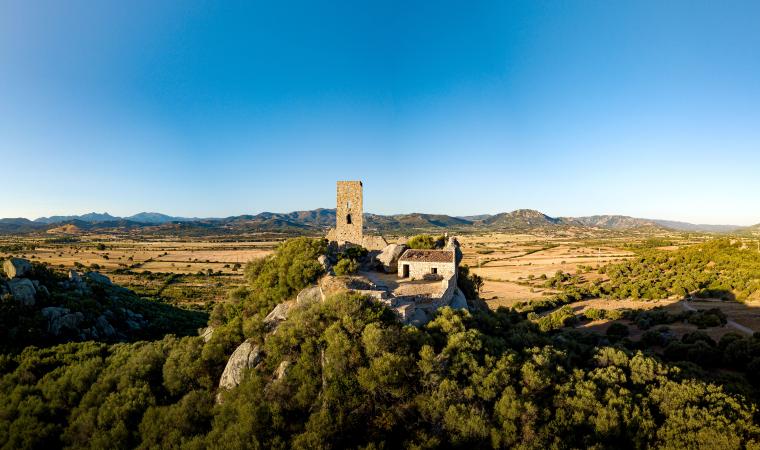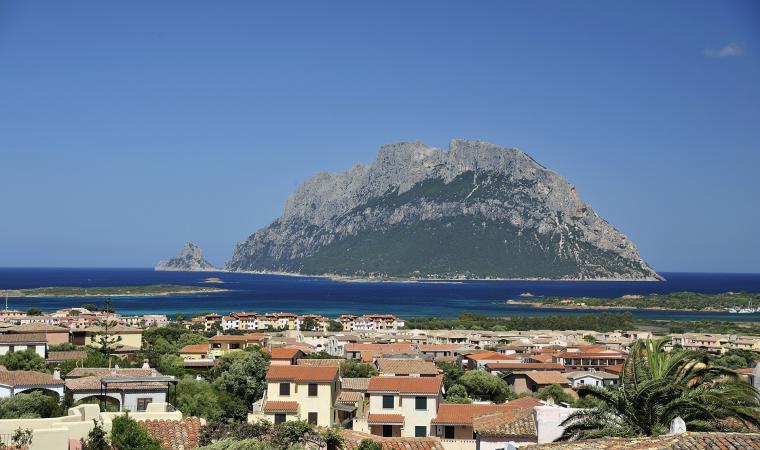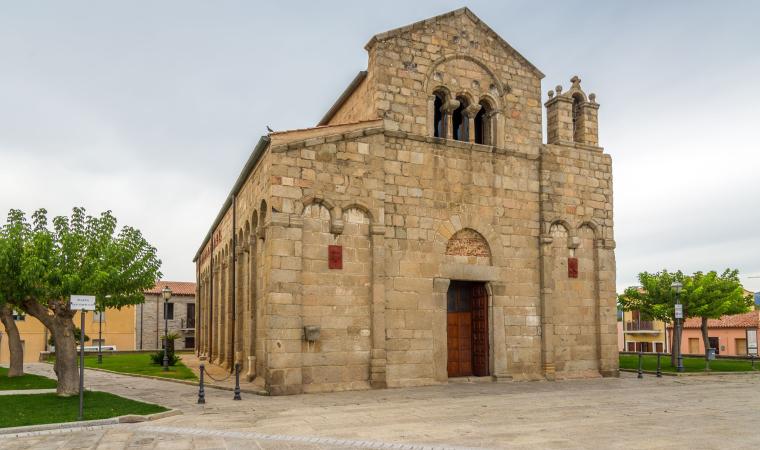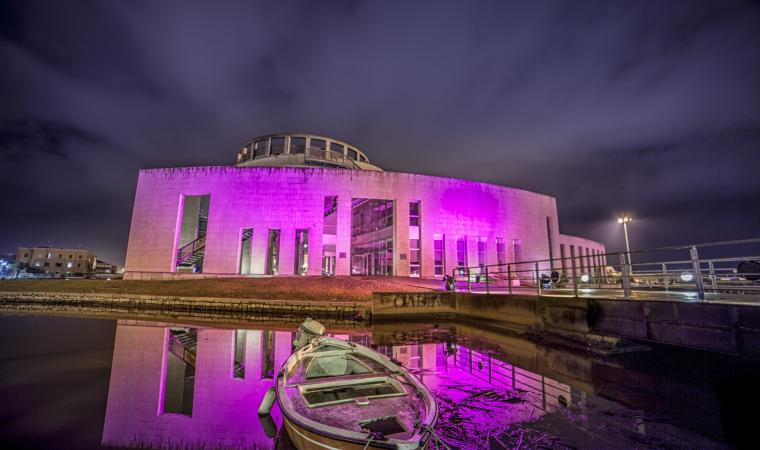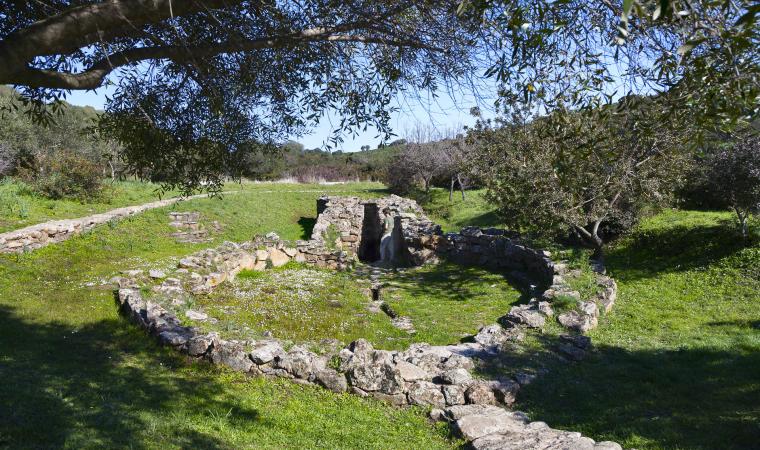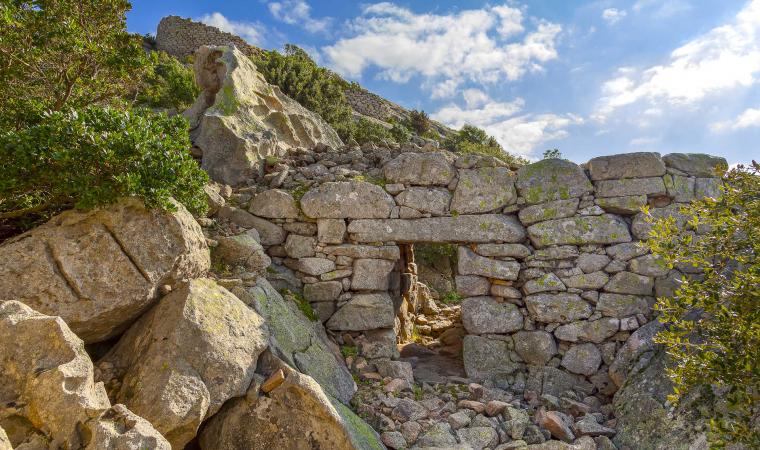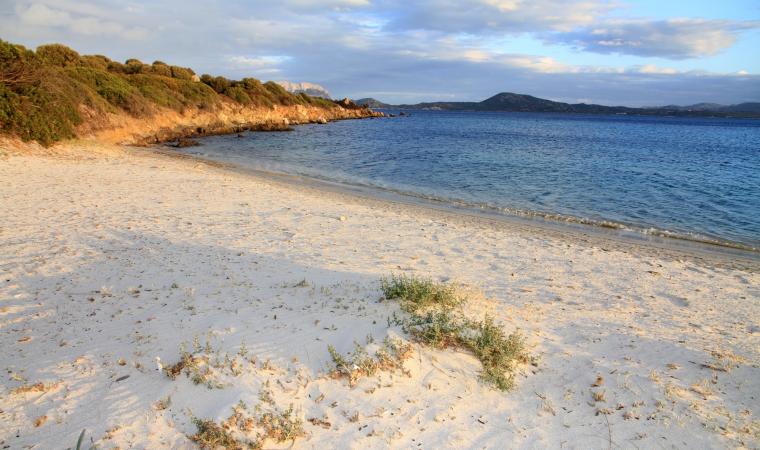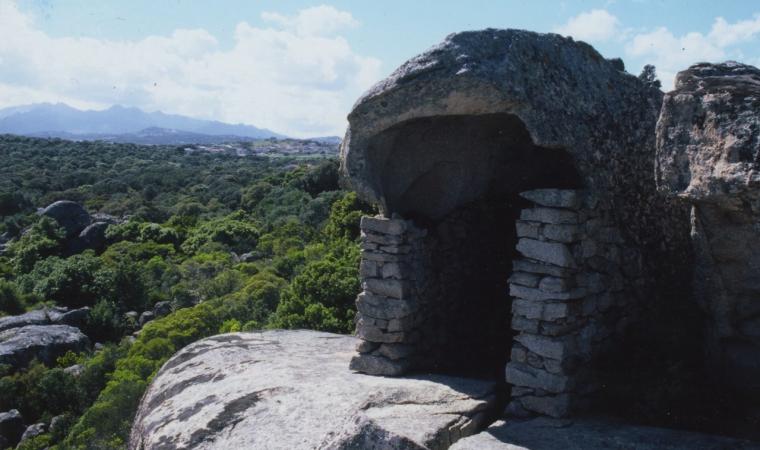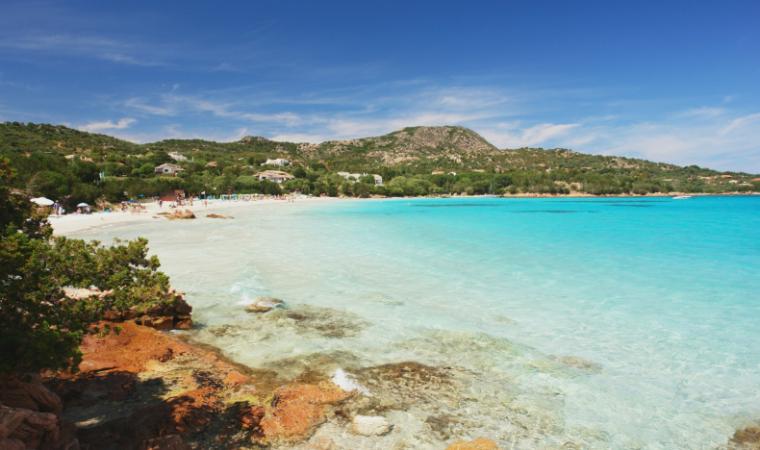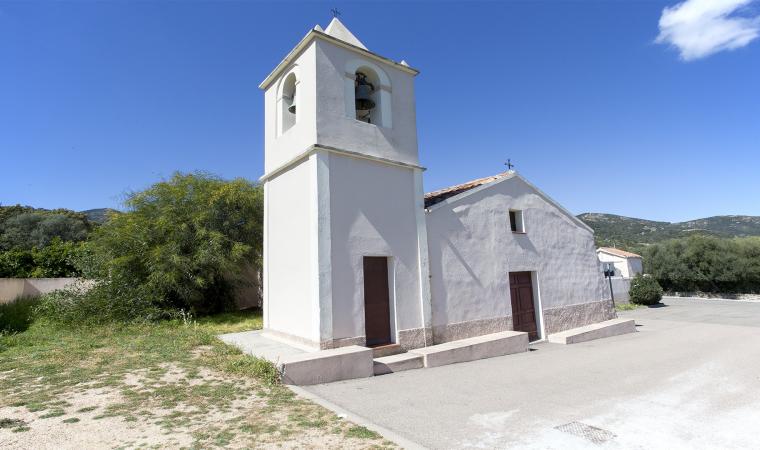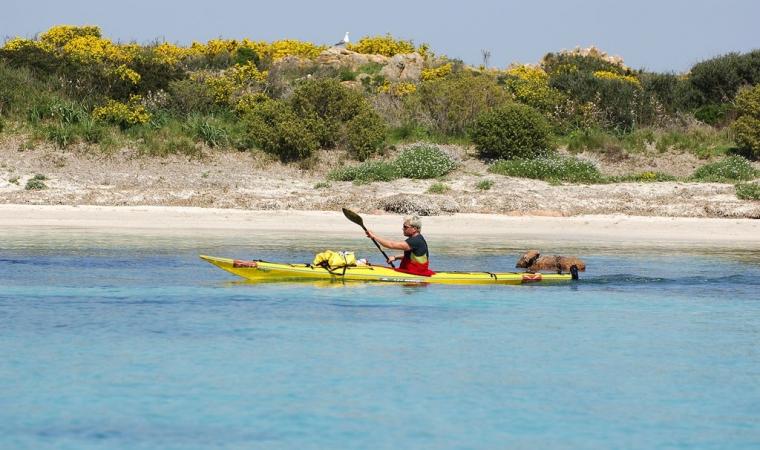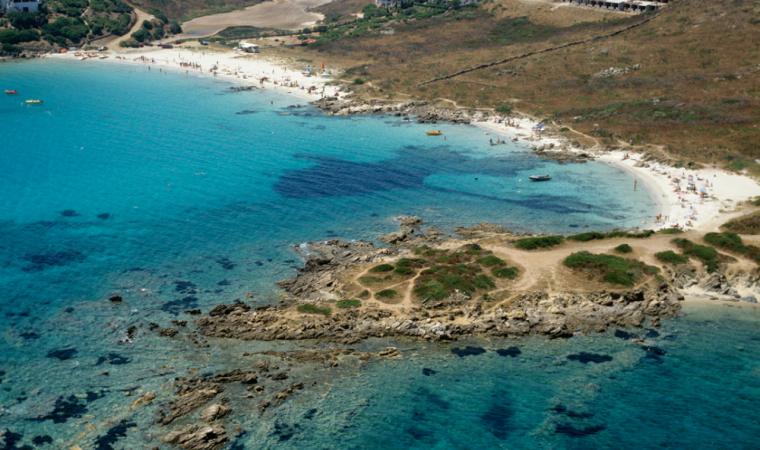Facing the Pedres Castle, near Olbia, a veil of mystery surrounds a Nuragic burial ground. Unlike the thousands of other graves of its kind, at the su mont’e s’Aba (or s’Ape) Tomb of the Giant the deceased were buried together. The sacred rites were performed in the funerary room but, unlike elsewhere, no funerary documents were found in the sacred well to accompany the dead to his or her encounter with the divinity.
The building was constructed in two phases. In the first phase, which dates to the period of the Bonnanaro culture, the tomb was built in the allée couverte manner, a sort of elongated dolmen. Then, around the year 1600 BCE, it was transformed into a Tomba di Gigante (literally Tomb of the Giant) with exedra and stele, traces of which can still be seen. The building, which was originally built in the shape of a bull’s head, the divinity responsible for generating life, had a semicircle in front of it.
At the centre of the exedra is a four metre tall granite stele and, at the base, a small opening that led to the funerary chamber within. This chamber is ten metres long, while the entire structure outside, still visible today, is 28 metres long and six wide, one of Sardinia’s largest.
Other remains of Nuragic civilization in the area around Olbia are the Riu Mulinu nuraghe, one of northern Sardinia’s most important prehistoric monuments, and the sa Testa sacred well, where rituals associated with water worship took place. Olbìa, which means “happy” in Greek, was founded by the Greeks and later became a Roman colony. Fascinating traces of Roman domination are still evident today: an aqueduct, thermal baths and s’Imbalconadu, a typical Roman farm. To fully complete your cultural tour of ancient Sardinia, do not miss a visit to the unique Archaeology Museum on the little island of Peddone. Here you will embark upon a journey into distant eras of the past, and to the necropolis museum underneath the lovely Basilica of San Simplicio, the city’s patron saint. And, finally, the iridescent ceramic dome of the Church of San Paolo will be the star of many of your photos.

